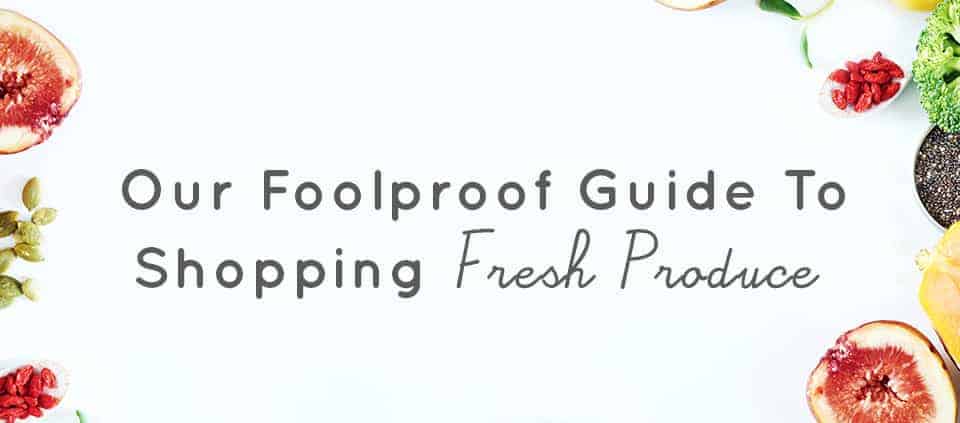Your Foolproof Guide to Selecting Fresh Produce
It goes without saying that you want to pick out the healthiest, freshest fruits and vegetables to feed your family, but how can you choose the best in the bin? This guide will help you choose the choicest of the 15 most frequently purchased fruits and vegetables, so you can avoid the “lemons” of the group.
- Bell Peppers: Bell peppers come in gloriously super-saturated colors – the darker, the better. Skin should be tight, smooth, and firm. Bell peppers can actually be male or female. Just check their bottoms! Three bumps means it’s a male, and four bumps means it’s a female. Males are good for cooking, but females are sweeter and perfect for snacking.
- Watermelon: Give that baby a thump – if it sounds hollow, you’re good to go! The best way to tell how sweet a watermelon will be is to look for the field spot. That’s the yellowish patch where the watermelon rested in the field. The darker it is, the longer the watermelon spent ripening, and the sweeter it will be!
- Potatoes: Avoid potatoes with green skin, as they could be poisonous. Dark spots, bruises, or sprouting potatoes are also past their prime. For all potato varieties, pick the firmest, smoothest, and plumpest of the bunch.
- Apples: Apples come in every shade, so focus on feel rather than look. Like potatoes, you want smooth, unblemished skin without bruises or soft spots. After you buy your apples, skip the fruit basket and tuck them in the fridge. If you leave them on the counter, they’ll continue to ripen and turn into a mushy mess.
- Carrots: The most nutritious carrots are dark orange – these contain more beta-carotene, which helps improve eyesight. Carrots should be medium-sized and not outrageously large or tiny. Avoid limp carrots or carrots that are black at the tip, as these have aged past their peak.
- Tomatoes: Locally grown tomatoes are prime, since shipped tomatoes are picked when they are still green and then ripen as they travel. Smell your tomato – the stronger the smell, the stronger the flavor! You shouldn’t squeeze a tomato, but you can pick it up. A ripe, ready tomato will feel heavier than it looks.
- Onions: All onions (apart from green onions, often called scallions) should be firm and dry. Look for onions with thin, shiny skin that clings to the vegetable. In this case, a potent odor is notbetter. A smelly onion is past its prime!
- Grapes: While wine might be the most popular form for grapes, kids will enjoy this tasty fruit as a finger food. Grapes should be consistent in color (whether that’s green, red, or purple) and attached to green, pliable stems. If you shake those babies, it shouldn’t rain grapes.
- Strawberries: Buying strawberries only to discover fuzzy mold on them two days later is the worst. Forget about shape and size – berries should look fresh, dry, and firm. If the box is stained, some of the berries in it are probably overripe. Local, in-season berries are your best bet for a good buy!
- Oranges: Color isn’t a good indicator here, because some growers spray their oranges with a potentially harmful dye to get that golden glow. Oranges won’t ripen after they’re picked, so look for a firm, heavy orange without any soft spots.
- Lettuce: Whether you’re going with romaine or iceberg, a head of lettuce should be somewhat symmetrical. The outer leaves should be a dark green, and the lettuce stem should look like it’s been cut recently – moist and light-colored rather than dry, crusty, and brown.
- Broccoli: Broccoli should have tight green buds and a fresh-looking stalk. Don’t worry about the size of the broccoli head as it won’t impact the taste. Although bigger is better for some vegetables, broccoli taste depends on when it flowers and not how large it is. So if the tiniest bunch has the tightest buds, go for it.
- Salad Mix: Don’t pay extra for double- or triple-washed salad; a Minnesota study found that simply rinsing with cold tap water is the most effective way to cleanse your salad mix. Try to purchase prepackaged mixes as far out as possible from the ‘best buy’ date, since as time goes by, they’re just going to wilt. Avoid any mixes with mushy or wet leaves, since these are more likely to be infected with salmonella.
- Celery: Before you buy a stalk, get your hands on it! The stalks should be tightly packed together without much fanning. They should feel crisp and ready to snap – not rubbery. The inner stalks are the tenderest, so look for a bunch with plenty of that inner goodness.
- Cucumbers: A ripe cucumber is a deep, rich green. Yellow spots indicate over-ripening. Cucumbers love the cold, so if you’re buying at a farmers’ market, make sure they’re stored in the shade. Cukes that bulge in the middle tend to have bigger seeds and a more watery taste, so skip those in favor of something slim and firm.
The best way to choose delicious fruits and vegetables is to buy seasonally, whether it’s winter or spring. If you want your family to increase their daily intake of produce, buy the best-tasting goodies from the supermarket and whip up something wonderful!





Wow! Great! Thanks for sharing this useful tips. I never had to check much after living here in Dubai. The supermarkets such as Carrefour have fresh and organic produce. Anyway, some of these were already known from trial and error. But the bits about watermelon and broccoli greatly helped. Could you help me how to select the best okra? Is it the firm ones the best?
Yes, the okra should be firm!